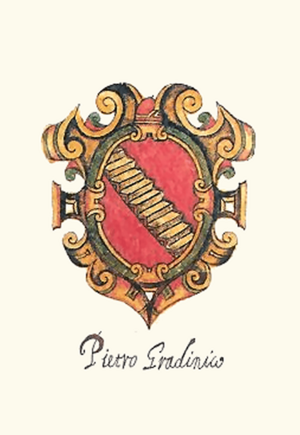Pietro Gradenigo facts for kids
Quick facts for kids
Pietro Gradenigo
|
|
|---|---|

Pietro Gradenigo's coat of arms
|
|
| Doge of Venice | |
| In office 1289–1311 |
|
| Personal details | |
| Born | 1251 |
| Died | 13 August 1311 (aged 59–60) |
Pietro Gradenigo (born 1251 – died August 13, 1311) was the 49th leader of Venice, known as the Doge. He ruled from 1289 until his death in 1311.
Pietro Gradenigo: Venice's 49th Doge
Pietro Gradenigo became the Doge of Venice in 1289. Before this, he was a `podestà`, which was like a mayor or chief magistrate, in a town called Capodistria. His time as Doge was full of important events and challenges for Venice.
Early Challenges and Conflicts
Soon after Gradenigo became Doge, Venice faced a big problem. In 1291, the city of Acre, which was the last major stronghold for Crusaders in the Middle East, fell to the Mamluks of Egypt. This was a significant loss for Venice and other European powers.
Wars with Genoa and Byzantium
Venice also got into a major war with its rival, Genoa, starting in 1294. Venice suffered several defeats during this conflict. They lost a naval battle, and their lands on the island of Crete were attacked and robbed.
The Byzantine emperor, Andronikos II, even arrested many Venetians in his capital, Constantinople. In response, the Venetian fleet attacked a part of Constantinople called Galata. They also threatened the emperor's palace. However, in 1298, Venice lost another important battle at Curzola. Finally, in 1299, Venice and Genoa signed a peace treaty to end the fighting.
The "Locking" of the Great Council
One of the most famous things Pietro Gradenigo did was create a new law called the Serrata del Maggior Consiglio. This means the "locking" or "closing" of the Great Council of Venice. The Great Council was a very important group of people who helped rule Venice.
How the New Law Changed Venice
This new law, passed in February 1297, changed who could be a member of the Great Council. From then on, only the children and grandchildren of people who were already members between 1293 and 1297 could join. This made Venice an oligarchy, meaning it was ruled by a small group of powerful families. Many ordinary citizens were unhappy because they no longer had a chance to be part of the government.
Conflict with the Pope
In 1308, during Gradenigo's rule, Venice got into a war with the Pope over control of a city called Ferrara. This was a very serious conflict. On March 27, 1309, Pope Clement V took a drastic step: he excommunicated Venice.
What Excommunication Meant for Venice
Being excommunicated meant that all Christians were forbidden from trading with Venice. This was a huge problem for a city that relied so much on trade. Many people in Venice thought Doge Gradenigo's policies were causing too many problems.
The Tiepolo Plot and New Governance
Because of the difficulties Venice faced, some powerful families tried to overthrow Doge Gradenigo and the Great Council. This plot was led by Bajamonte Tiepolo. On June 15, 1310, their attempt to take over failed. The leaders of the plot were severely punished.
The Rise of the Council of Ten
The failed plot by Tiepolo led to the creation of a new group called the Council of Ten. At first, this council was meant to be temporary. However, it soon became a permanent and very powerful part of the Venetian government. In fact, the Council of Ten eventually became the real power behind the Republic of Venice.
The End of Gradenigo's Reign
Pietro Gradenigo died on August 13, 1311. Because Venice was still under the Pope's excommunication (called an interdict), traditional religious ceremonies could not be held for him. He was buried in an unmarked grave on the island of Murano.
He was married twice. First to Tomasina Morosini, with whom he had a daughter named Anna. Anna later married Jacopo I da Carrara. His second wife was Agnese Zantani.
Images for kids


